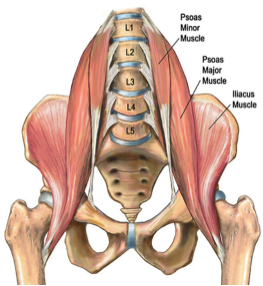3 TOP TIPS FOR YOUR HIPS
Hip Anatomy and Impingement syndrome:
The hip joint forms a solid connection between the lower limb and pelvic girdle, thus meaning it is designed for stability and weight-bearing rather than to offer a large range of mobility. The joint is a ball and socket joint formed between the thigh-bone (Femur) and the pelvis (acetabulum) and gains its stability from large supporting ligaments and muscles.

In the healthy hip joint the femoral head is able to glide smoothly within the socket of the acetabulum however this can be impaired in patients who suffer from femoral acetabula impingement syndrome (FAI). Hip impingement or FAI is a condition in which the structure of the hip joint become modified causing an impaired capability of the femoral head to move freely and smoothly within its socket. Typically this will present as stiffness or tightness of the thigh, hip or groin, poor ability to flex the hip past a right angle and pain in the groin or front of the hip when flexing the knee towards the chest, running/cycling or sitting for periods of time.
FAI commonly arises from high impact sports or exercises that involve a large amount of jumping, changing direction and recurrent movement of the hip joint outside its normal range (such as football, dancing and golf) placing excessive and abnormal load through the hip joint. The stress of ongoing excessive load can lead to either a thickening of the femoral neck (CAM lesion) or deepening of the hip socket (PINCER lesion), or a combination of both which over time can result in damage to the cartilage of the hip joint.
In other cases FAI can be present from birth and be largely asymptomatic until later in life.

What are my treatment options?
In some cases surgical intervention may be required for successful treatment of FAI however there are many conservative measures that can be taken to improve hip functionality and reduce symptoms associated with FAI.
Osteopathic treatment may be able to assist in reducing symptoms of FAI. It is not uncommon with FAI for the muscles of the hip, pelvis and lower back to become tight acting on further limiting the range of motion available at the hip joint. Treatment of soft tissue massage and muscle stretching techniques can be used to help relax and lengthen these muscles, assist in reducing inflammation and ultimately reducing pain.
Exercise based rehab focused around promoting hip mobility may also assist in the ongoing management and reduction of symptoms – Here we have provided you with 3 of our favorite at home stretches and exercises to give a try!
1. Kneeling hip flexor stretch

2. Pelvic bridges

3. Hip adduction stretch (Frog stretch)

If you are currently suffering from hip or groin pain and would like further personalised advice on treatment and management options feel free to contact the clinic today to discuss whether Osteopathy or Exercise Physiology may be able to get you back into what you love doing!

